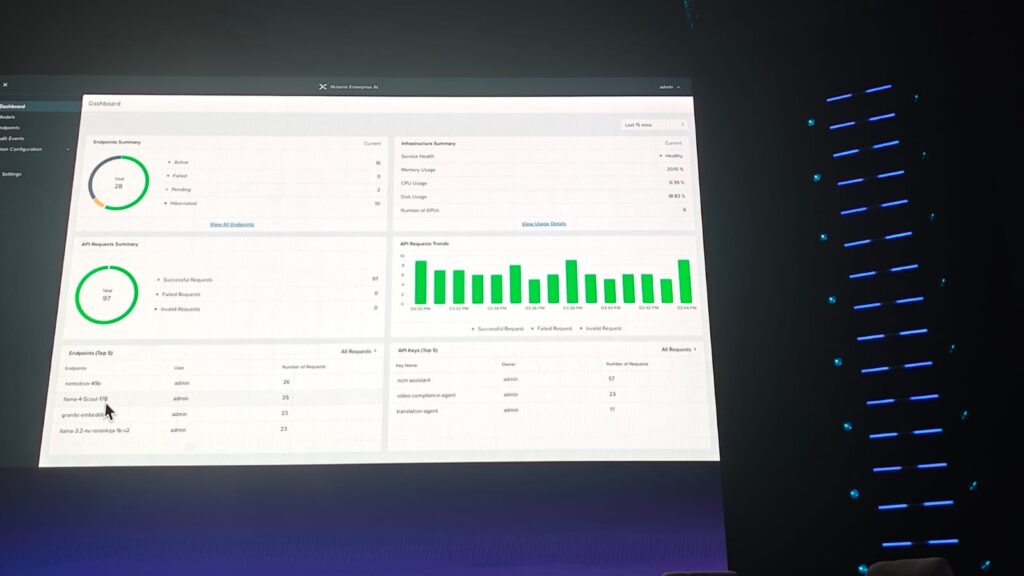Day 2 of Nutanix .NEXT opened with the keynote from Lee Caswell (SVP Products and Solution Marketing) and Thomas Cornely (SVP Product Management) reflecting on the announcements from the first day and dug deeper into four key areas including demos.
Modern Hybrid Cloud
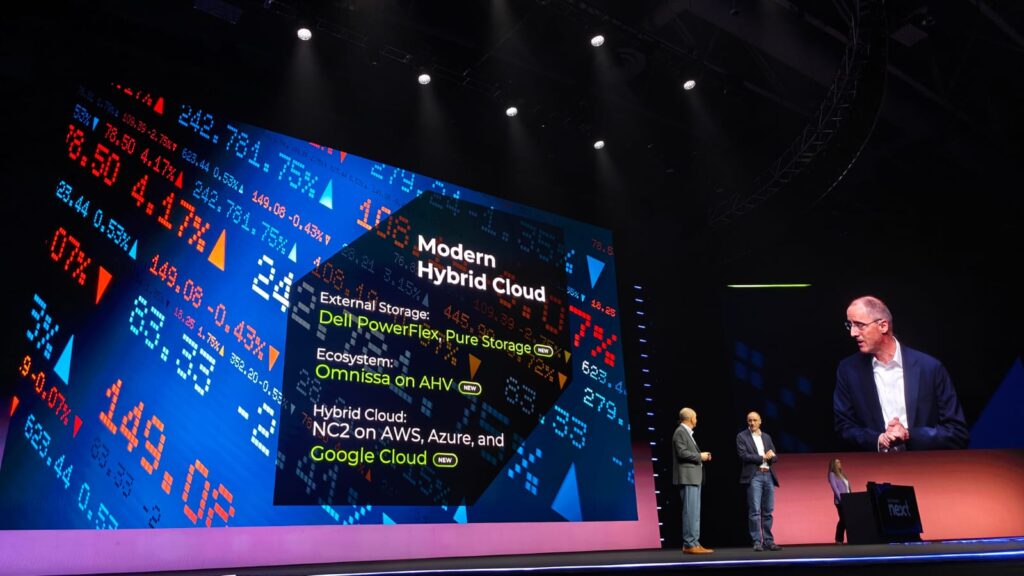
Joined by Laura Jordana (Director, Technical Marketing) to lead through some demos we were able to see first hand Omnissa with AHV Support connecting to a Prism Central! (coincidentally, Citrix + Nutanix have just announced this same via Prism Central capability too) This should provide excellent multi-cluster capabilities without having to have manually worry about individual hosting connections.


Laura walked through how to add a Dell PowerFlex ‘external storage‘ to an existing Nutanix HCI cluster, and showed a sneak peak of how Pure Storage will be configured in a similar UI, just a different drop down from the ‘external storage wizard‘. Does this pave the way for other external storages? Laura also explained that there was a best practice to have a separate virtual switch for storage, worth making sure you have 4 NICs in any nodes you may want to use external storage on later, or possibly even 6 NICs now if you have physically separate cluster and payload traffic already.
Simplicity at Scale

Thomas welcomed Artur Krzywdzinski (Director Solution Engineering) to the stage to show us some of the huge developments Nutanix have made in supporting customers with scale challenges.
Artur shared a view of Nutanix Central (SaaS offering, with on-prem coming) enabling simpler access to manage 2600(!) clusters worldwide across 25 Domains (Prism Centrals) from a single UI. Enterprises have been calling for this for a long time, I’ve often called it the ‘Prism Central for Prism Centrals‘ – to see something in the flesh was really refreshing.
Artur moved onto talking about Zero Touch Framework (ZTI) which took my breath away, I had expected some integration of Foundation Central into Nutanix Central to enable some form of cloud bootstrapping but this was much more.
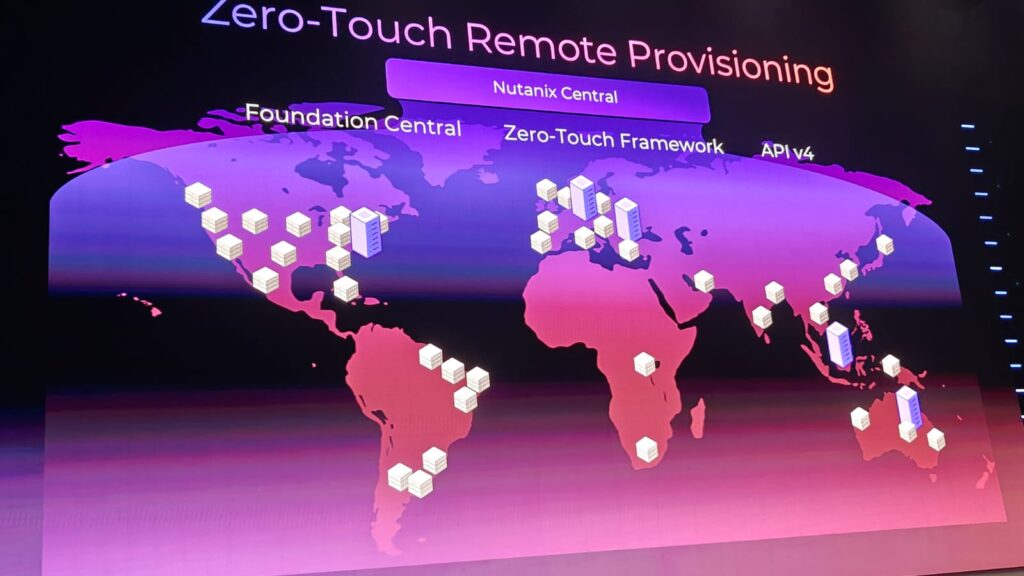
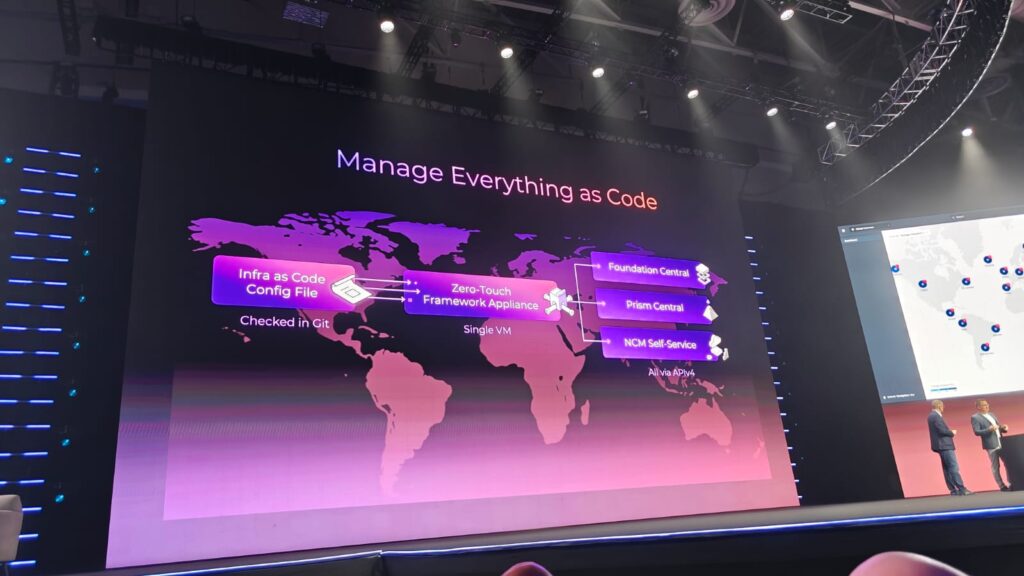
Being able to describe a complete build in yaml and host it on Github enabling ZTI to provision a new Prism Central Domain with 150 clusters!
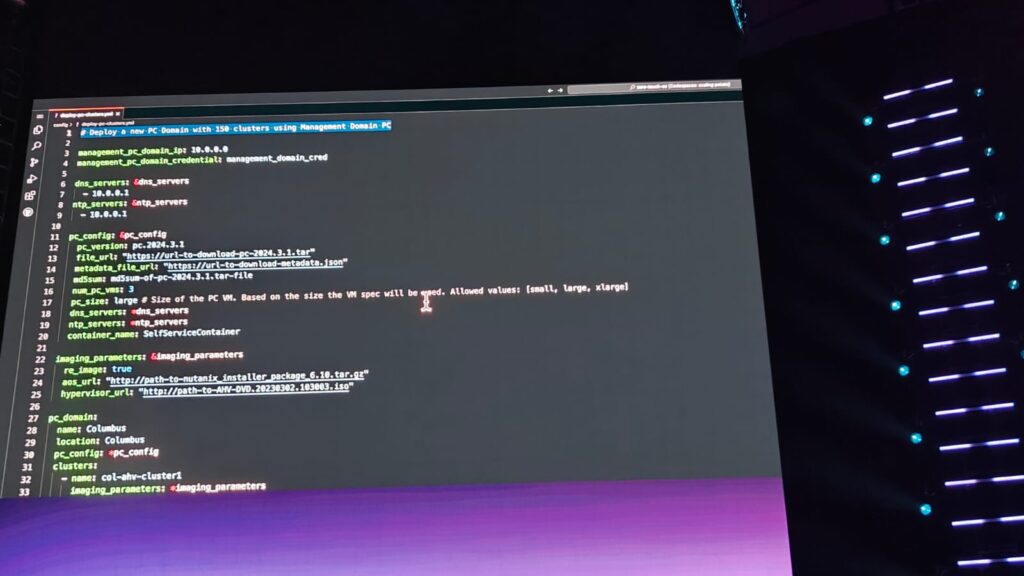
We’ve known for a while that nodes out of the factory can ship in a ‘ready to build’ mode (i.e. dhcp on cvm) that picks up Foundation Central information and automatically registers as ‘ready to be used in a cluster’ but this goes way further.
A common problem larger organisations face is often config drift between clusters, small changes such as removing a nameserver, or not enabling a particular setting can lead to behavioural changes between environments that go undetected for a long period of time. Nutanix is introducing automated governance as part of Nutanix Central to help admins keep on top of drift.
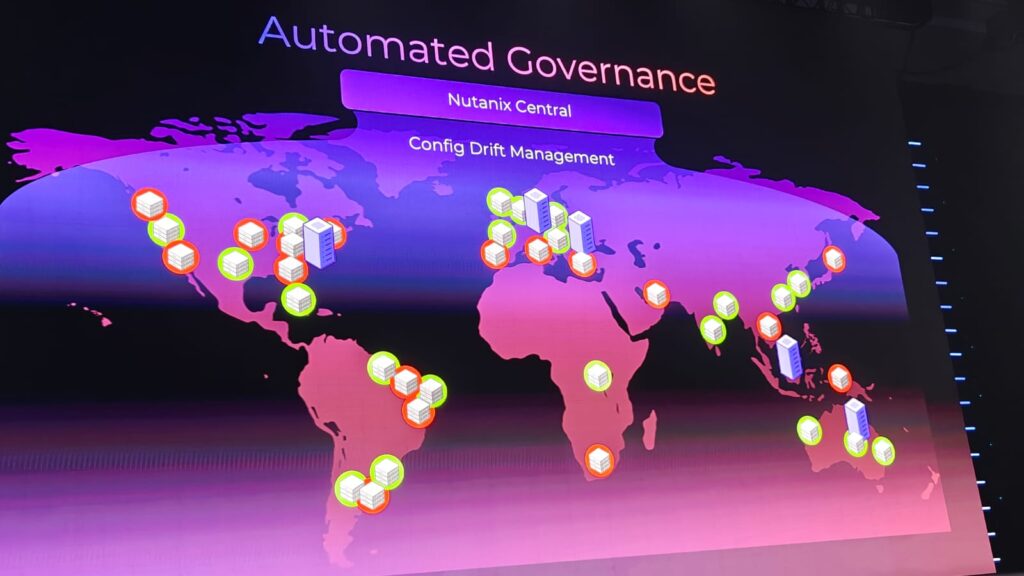
In a demo, the removal of a nameserver from a cluster was automatically restored within 5 minutes when ZTI checked in for the correct config information. Powerful.
Moving onto another challenge larger organisations face is keeping on top of LCM updates for multiple clusters because traditionally these tasks were performed on a per cluster basis – introducing Multi-cluster Lifecycle Management.


That’s going to be pretty powerful in helping keep on top of things for sure.
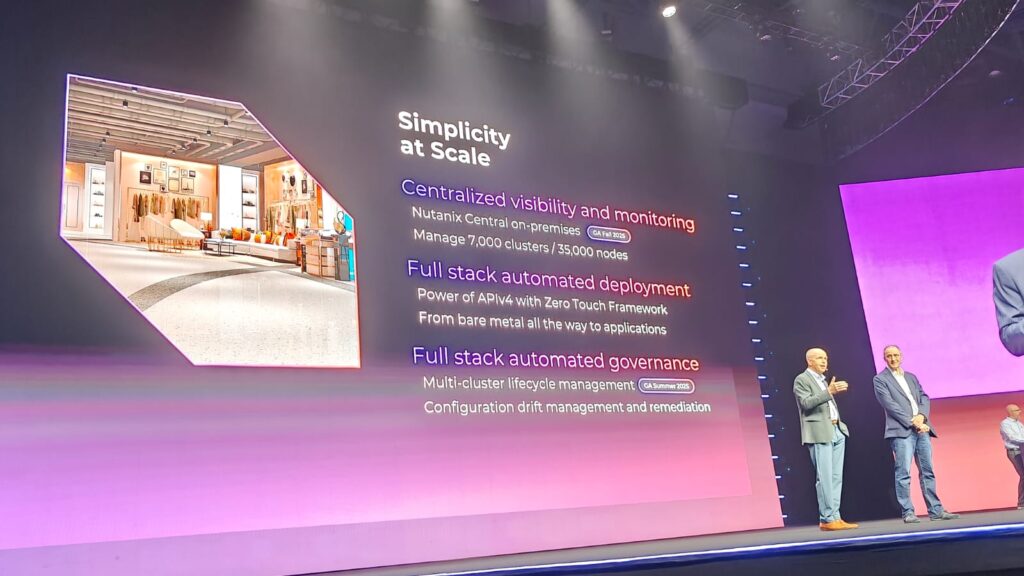
Air-Gapped Cyber Resilience
Jason Burns (Director, NCI Technical Marketing Management) joined the stage to talk about Air-Gapped Cyber Resilience and how Nutanix can help customers cope with the ever increasing threats of Cyber Attacks.
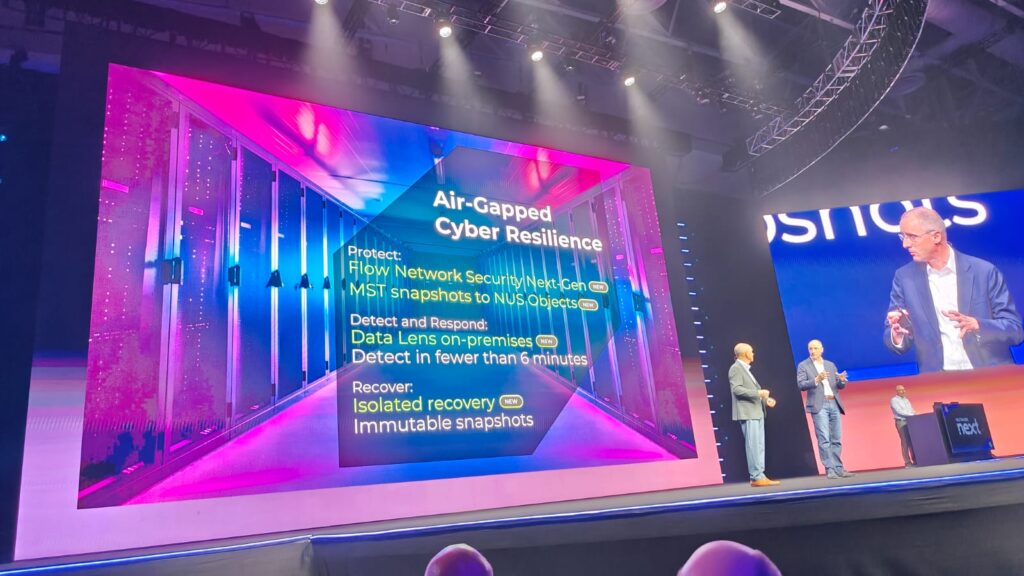
Firstly, a huge emphasis on Nutanix’s approach to providing ‘layers’ of security, particularly with Flow Network Security Next-Gen we can have isolated routing domains (VPC), combined with micro-segmentation (east-west) and intelligence to visualise what is talking to what. Multi-cardinality was recently introduced in Flow Network Security Next-Gen to allow much more flexibility in policy creation.
Taking things further, the ability to now take MST snapshots of running workloads and store them in Nutanix Unified Storage (NUS) buckets is a very powerful solution to further protect workloads from attack.
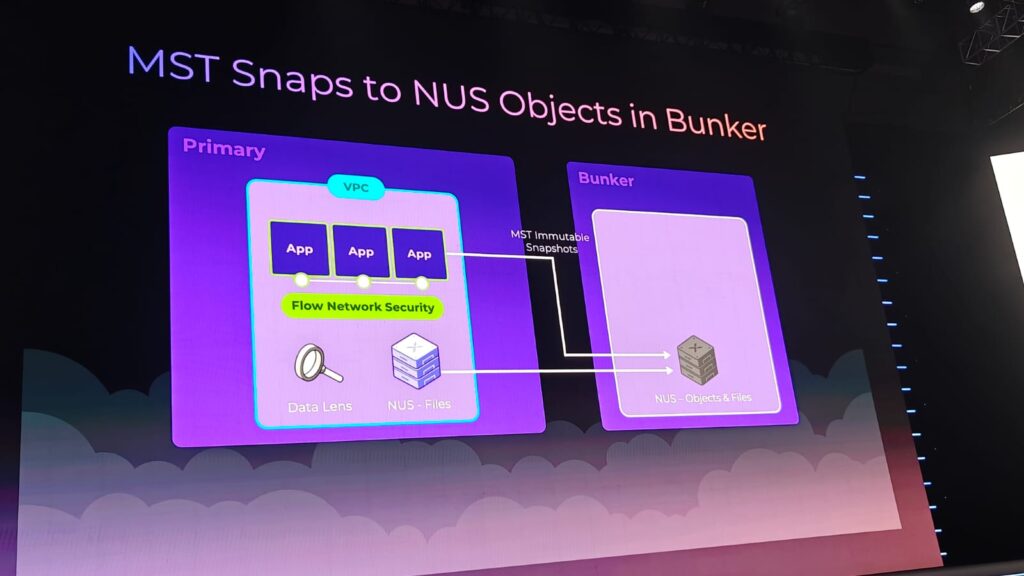
Jason showed a vibrant demo of how Data Lens can help identify ransomware attacks on Nutanix Unified Storage, and even take action – configured with a runbook upon detection the workload was isolated and an alert sent to staff. The compromised workload was able to be cloned to an isolated VPC secured with FNS NG Quarantine policies for investigation by the team.
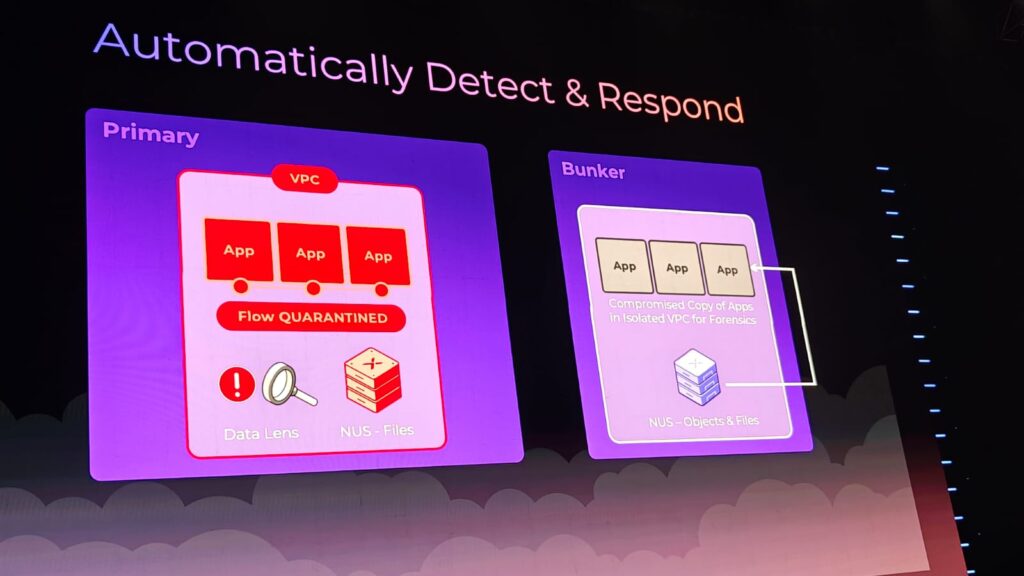
The associated user account and IP address can be blocked from accessing Files to stop further lateral movement.
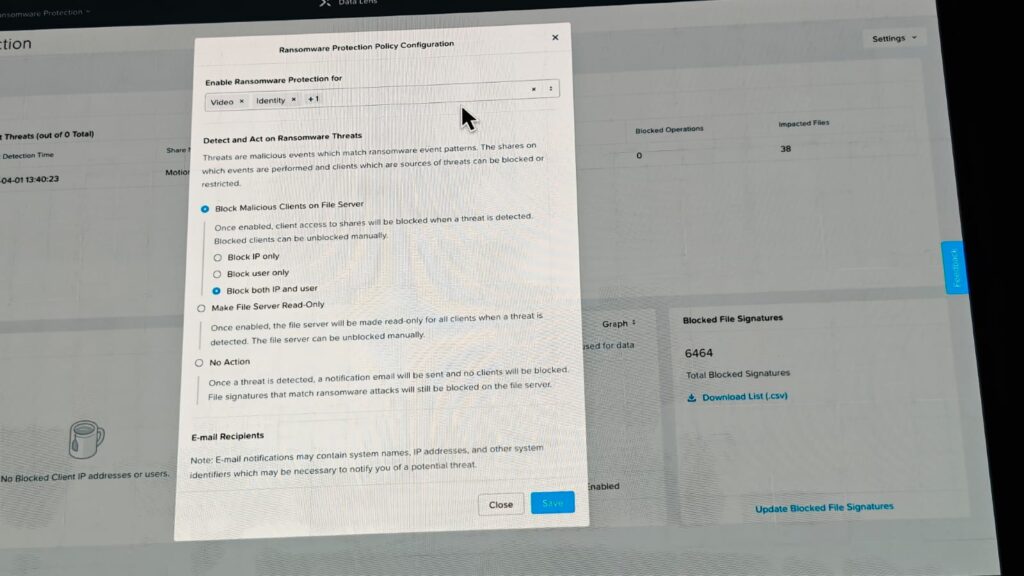
Combined with the ability to ‘see’ within Data Lens when the odd behaviour begun it was possible to roll the workload back to a point before this time after investigation concluded the point of entry.
Cloud Native Anywhere
Jose Gomez (Director, Technical Marketing Engineering, NKP & Cloud Native) joined the stage to talk about the hot topic of the conference, running container workloads anywhere with consistency through the use of Nutanix Kubernetes Platform (NKP) and Cloud-Native AOS.
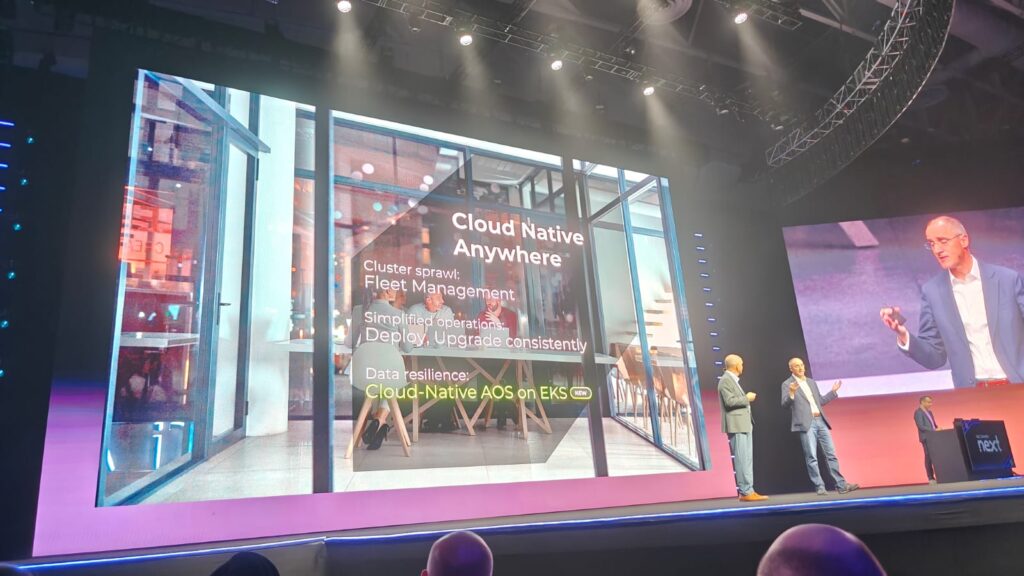
Jose showed an impressive view of fleet management across a variety of underlying platforms all managed from a single UI.
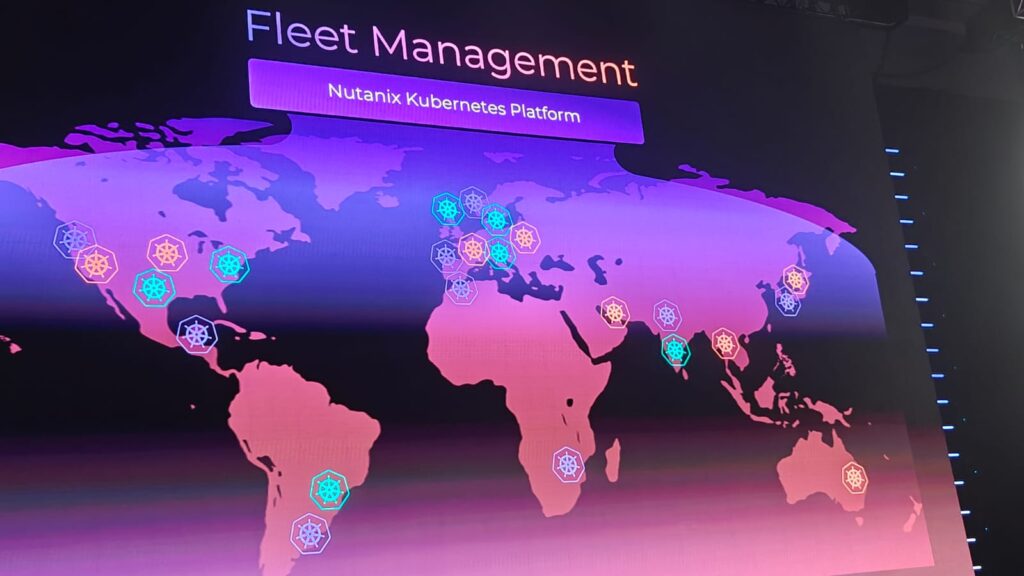
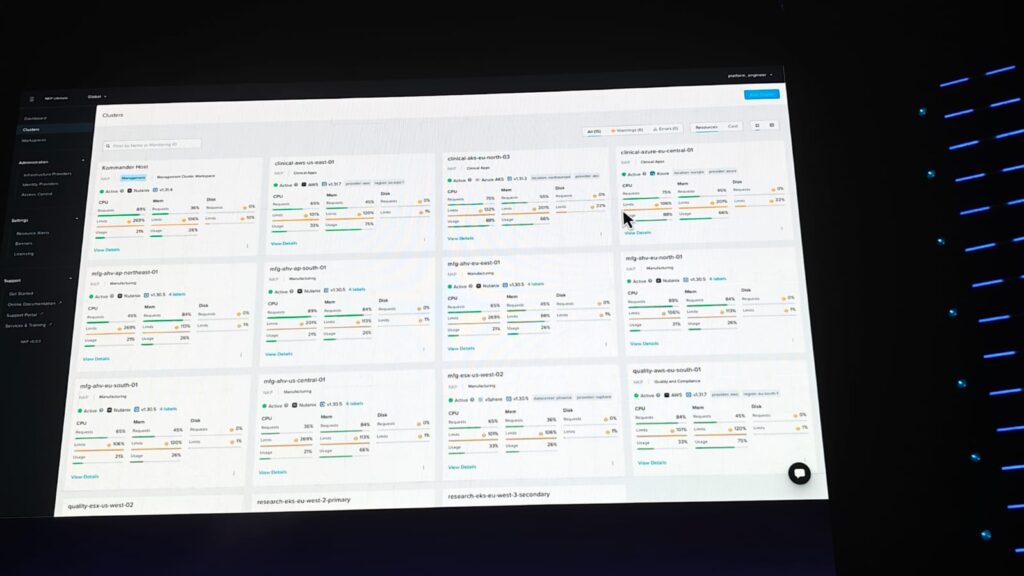
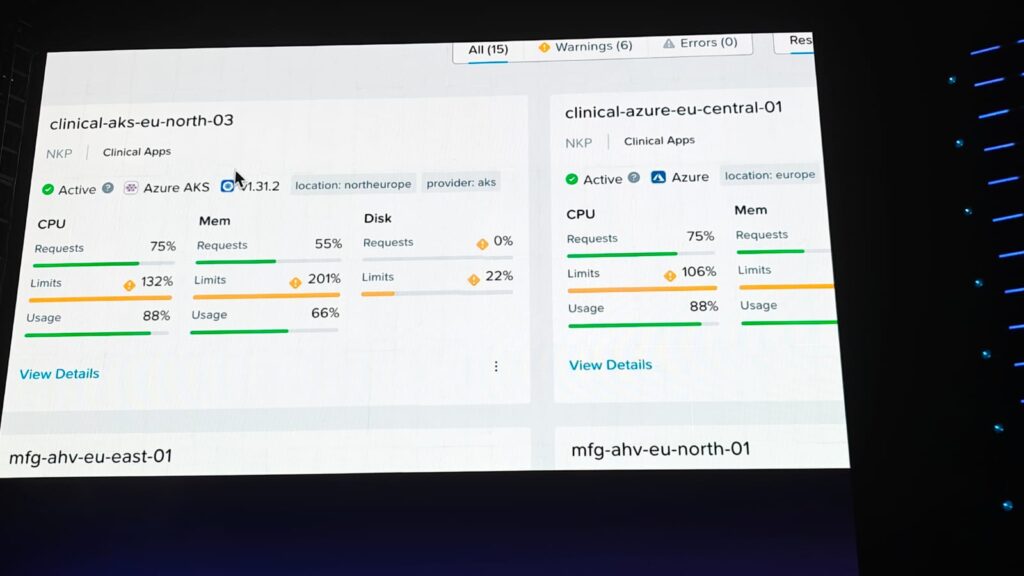
The method to create a new cluster was pretty cool too, integrated with Prism Central categories, and Flow Next-Generation Security policies suddenly it is obvious to see the layers of protection and configuration consistency playing back in again.

I am expecting to see a lot more of NKP, even within Prism Central where we have a microservices architecture (MSP) there are cases where it could make sense to NOT run something within Prism Central and NKP as a platform provides a very sensible, decoupled, solution for this. I wonder if we’re going to see non PC-core services spin out into more generic NKP hosted services as part of the overall capabilities of Cloud-Native AOS.
Agentic AI / Enterprise AI
Manosiz (Mano) Bhattacharyya (Nutanix CTO) joined the stage to talk about how no Keynote would be complete without a discussion on AI.
Mano spoke of the developments from 2024 being the year of ChatBots and Large Language Models (LLM)
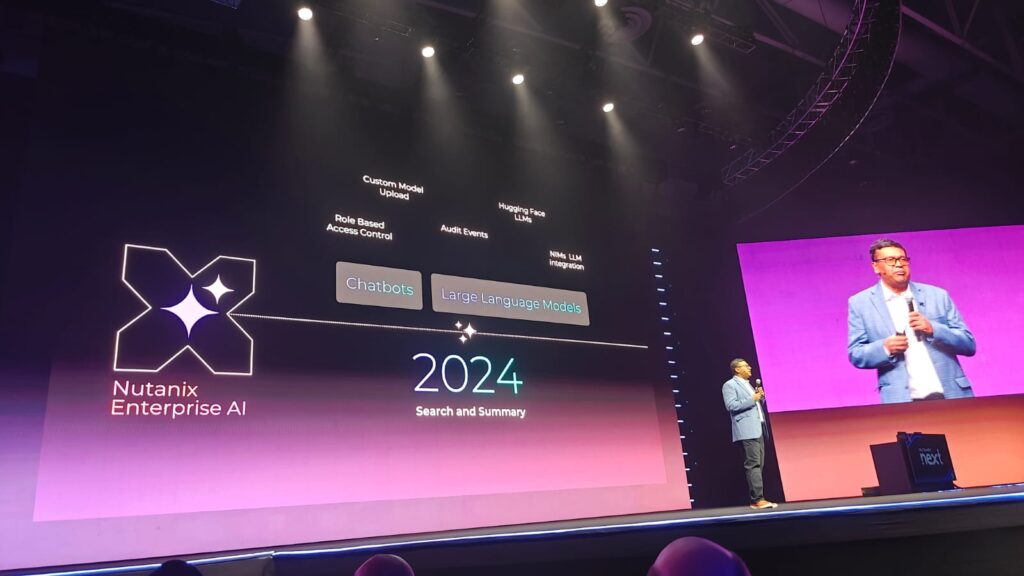
Ashwini Vasanth (Principal Product Manager) joined Mano to look at what 2025 would bring, the advent of Agentic AI, & Infrastructure as Code
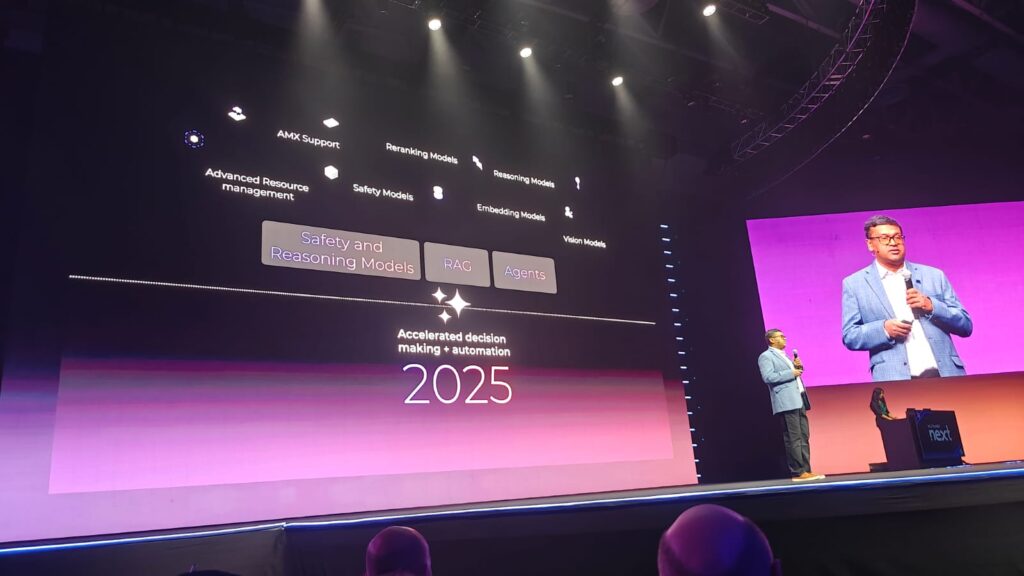
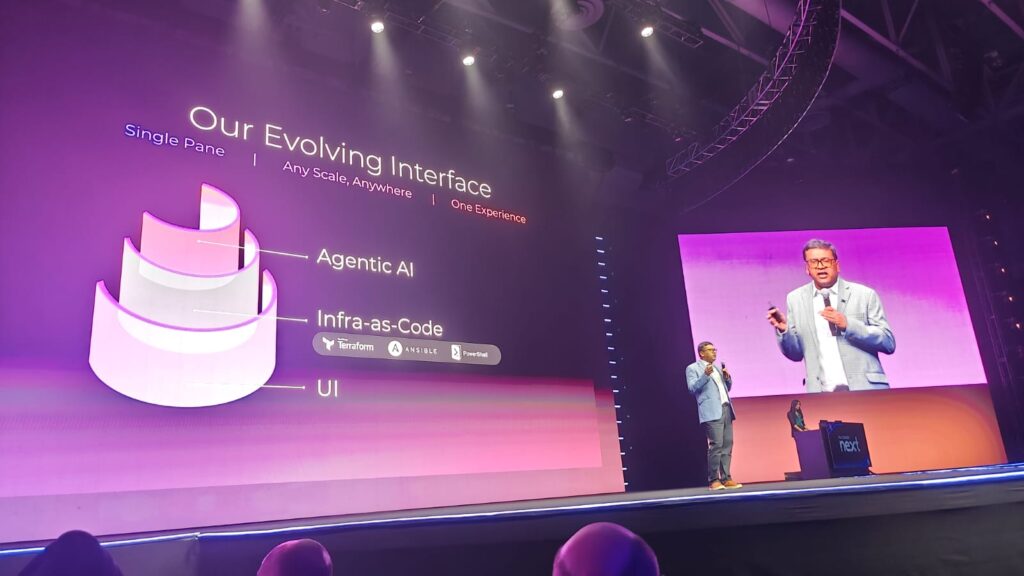
Ashwini demonstrated how to leverage the NCM AI Assistant to create a database on NDB…. and the AI assistant even asked whether it should be monitored and take self healing actions through an automatically created runbook… Insane.

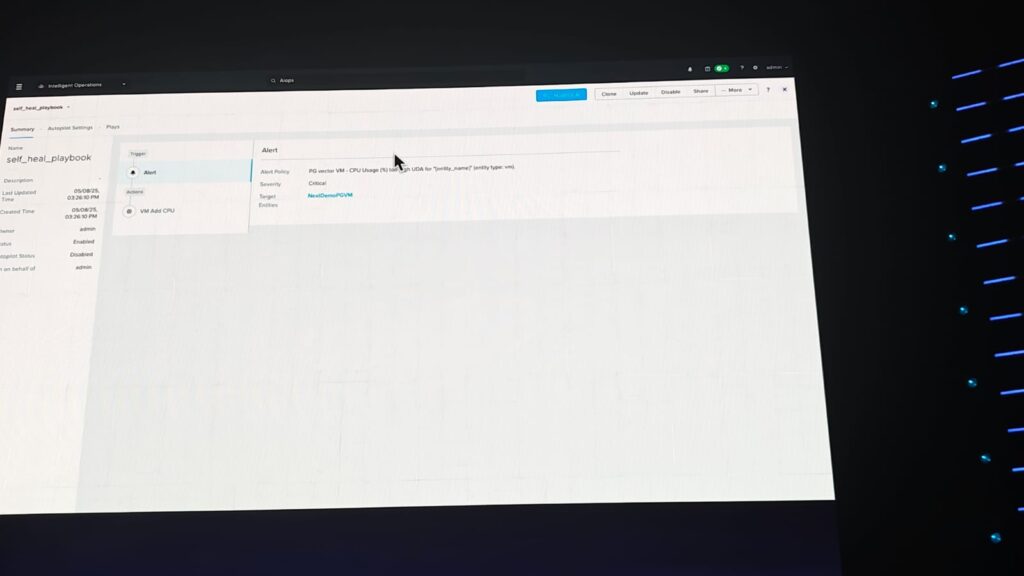
Moving on, Mano spoke of the notion of AI Agents working with other AI Agents to achieve greater things, a little shudder down my spine of thoughts of Skynet and making sure to thank them properly 🙂
Mano and Ashwini then spoke about compliance, and how multiple AI Agents working together could help with it – before showing a demo of uploading a video to a system, AI transcribing it, then finding an inaccurate ‘promise’ statement, and flagging up the compliance breach!
That was absolutely insane to see happen.
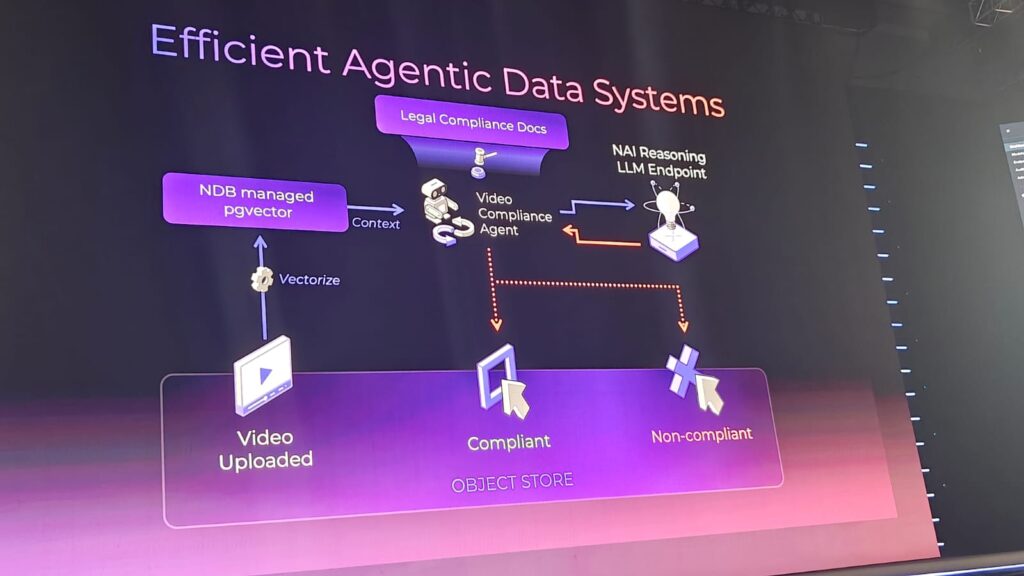
Nutanix is working hard with Nvidia and other partners within the ecosystem to commoditise AI much like how it has the virtual infrastructure.
A big push for Nutanix is in not duplicating things, allowing multiple internal customers to consume functionality rather than doubling up.
A nice polished dashboard of the whole Nutanix Enterprise AI (NAI) experience reveals this co-existence in the bottom right corner where each app or user has an individual API key and can consume services together.
